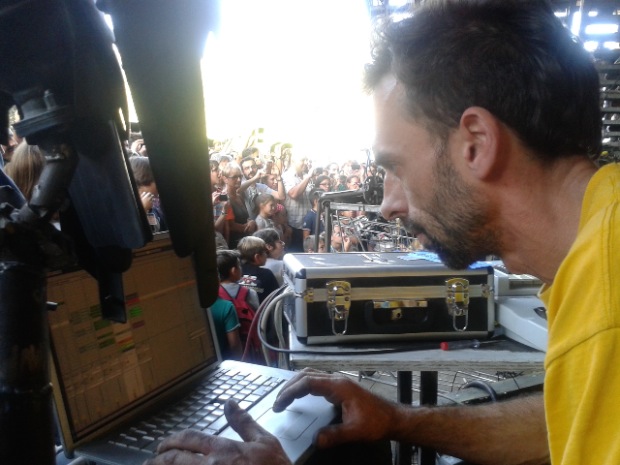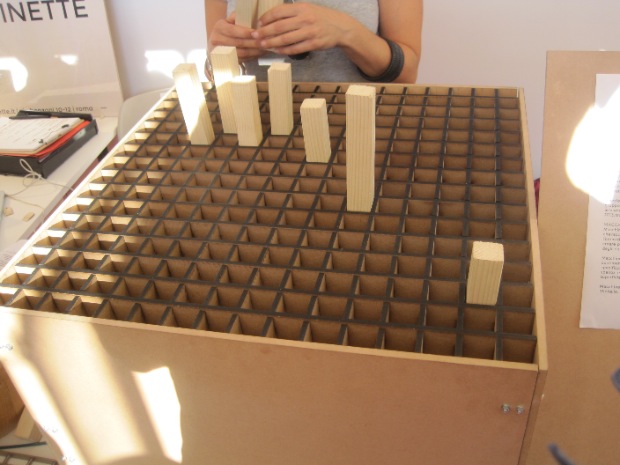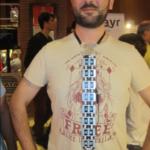Walking with the experts from the world of innovation, from all over the earth, which met in Rome from September 28 to The Week Innovation
“A PLACE FOR INNOVATORS, Coders, HACKERS, MAKERS, futurists, financers, AND ANYONE WHO HAS A STORY TO TELL ABOUT HOW THE FUTURE COULD BE” is the opening that stands on the event ended Sunday, Oct. 5 with the second edition of the European Maker faire.
The largest trade show dedicated to digital manifacturing to know the world of digital workshops and their craftsmen, the makers. A world made of processors and cables of all sorts, 3D printers, using the well-known Arduino open source hardware platform – made in Italy – allowing you to create electronic items and small devices.
DISCOVER. THINK UP. MAKE is the diktat of the days past with the makers,
600 projects from Italy, France, Portugal, United Kingdom, Germany, India, Belgium, Japan, China, Switzerland, Sweden, Netherlands, Canada, Taiwan, Colombia, United States, Ireland, Spain, Serbia, Brazil, Belarus, Denmark , Croatia, Poland, Egypt, Mexico, Singapore, Turkey, Morocco, Guatemala, Czech Republic, Australia and Greece
and a busy schedule of meetings, concentrated in 3 days, with the guru of technology and innovations.
Just the time to dive in and find out all the news, follow the different workshops that too on how to build a robot, a 3D printer or just a lamp! We have focused on projects related to sounds within the space.
Anyone, adult or child, who walking in the Auditorium Parco della Musica in these days you will come across the “scrap metal sound” of the artist robot berlin Kolja Kugler that led to the second year of his band The one love machine.
With the pace of Kun-Chac, the robot on drums made of old iron found on the street and one year of assembly work, “although now after several shows I start to dress him up and make her an independent central drum that sounds and moves on its own, another small robot, “says its creator-assembler.
For the other 2 members of the band – ensures Kolya – the work was longer. The guitar his robot, with 4 years of preparation, it appears that more defined. While the highlight is the third element with piston: more interactive, “he spits water” and also allows him to do shows on the street and be able to earn with his creations. “Often my robots are compared to the Terminator or of Robocop. Instead, I see them kind and not brutal: the robots are hippies who like the music and being in the midst of nature. Any pace is fine reaggae, drum ‘n bass, techno … and it would be nice to be able to involve the singers to do with their session of live music”.
As we venture into the second floor crossed CROSS-PC 5.0 the program allows the construction of speakers and control the resonant frequency of the speaker audio system. The group of boys headed by the project engineer Giussani, who has made the history of audio and analog speakers of our country, and beyond. You can download this software for free: audioplay.it
One way to keep alive the audio and safeguard it in his new capacity digital, even with the possible problems of psychoacoustic consequences. Because – as told by a nice elderly visitor stopped at the stand – “one once sat, and evaluating music. Today we look at a line … on a monitor. “
Always with an eye toward the sound, but for a more didactic, is what is proposed by the draft Studio Macchinette
It’s called Coffee Sonora and is a program that allows you to create visual landscapes suonie “consists of multiple cells, each containing a light sensor. Through human interaction, placing a cube inside the cell, the sensor is switched off and generates a specific sound. Coffee is made of wooden frame cubes illustrated polystyrene / sensor / Arduino / system / media circuit / Flash / MaxMSP and is based on the library ToneMatrix Andre Michelle. “
“In each” cell “there is a sensor which corresponds to a sound – explains Simona Lombardo – Putting together a sequence of bricks reproduces a corresponding sequence of sounds. A machine that involves the three senses: hearing, sight and touch to this useful for introducing children to listen, the education of the ear to the music, to make music therapy and practices aimed autism.
But the week dedicated to innovation has also hosted inside the Hackathon H-ACK Living, a 24-hour marathon dedicated to the development of innovative digital ideas around the design of some Italian brands successful. Developers, architects, designers, engineers and marketing specialists have come together as a team to find innovative digital solutions to rethink the “house of the future.”
#AUGH Is the team that has won the coveted Maker Faire thanks to interactive lamp for children that tells the tales, a reinterpretation of the Totem floor lamp for decorative design lighting company Slamp.
“The lamp, redesigned and developed by the winning team in the course of 24 hours, is interactive with a soul, with a heart as open-source and sensor and built-in microphones, as well as allowing new functionality, such as Wake twilight and ambilight system for home theater, finds its innovative vocation in a kind of baby monitor evolved, which is not only able to recognize the baby’s crying, sending a signal to the parent, but it becomes a friendly presence capable of telling stories more beautiful. Through an app, in fact, the child can select a favorite story and the lamp comes to life in the story sound but also in the visual narrative, using LED light sources, offering a narrative in synchronous light / sound with the sense of the story. An object of great charm but then also for entertainment, play and stimulation for the children of the 2.0 generation. “
Of course between robot and 3D printers of different sizes, between the panels dedicated to retrace the history of technological innovations over the past 50 years, we have found several items and novelties of all kinds.

Parole, lingua e linguaggio, arte e le nuove tecnologie sono quel filo rosso con il quale mi diverto a tessere le mie giornate. Innovazione e sviluppo di nuovi orizzonti gli spunti che mi fa piacere incontrare. Giornalista, editor, copy writer e content media. Dopo la laurea in Filosofia del Linguaggio e della Mente a Napoli, mi trasferisco a Roma dove mi specializzo in comunicazione per il web e i nuovi media e per diversi anni sono caporedattore del mensile “Next Exit, creatività e lavoro” approfondendo temi di economia della cultura. Ho curato la pubblicazione di diversi progetti editoriali, tra cui Young Blood, annuario dei giovani artisti italiani, e RomaCreativa, per fare una mappatura dei creativi italiani nel mondo e nella capitale.































